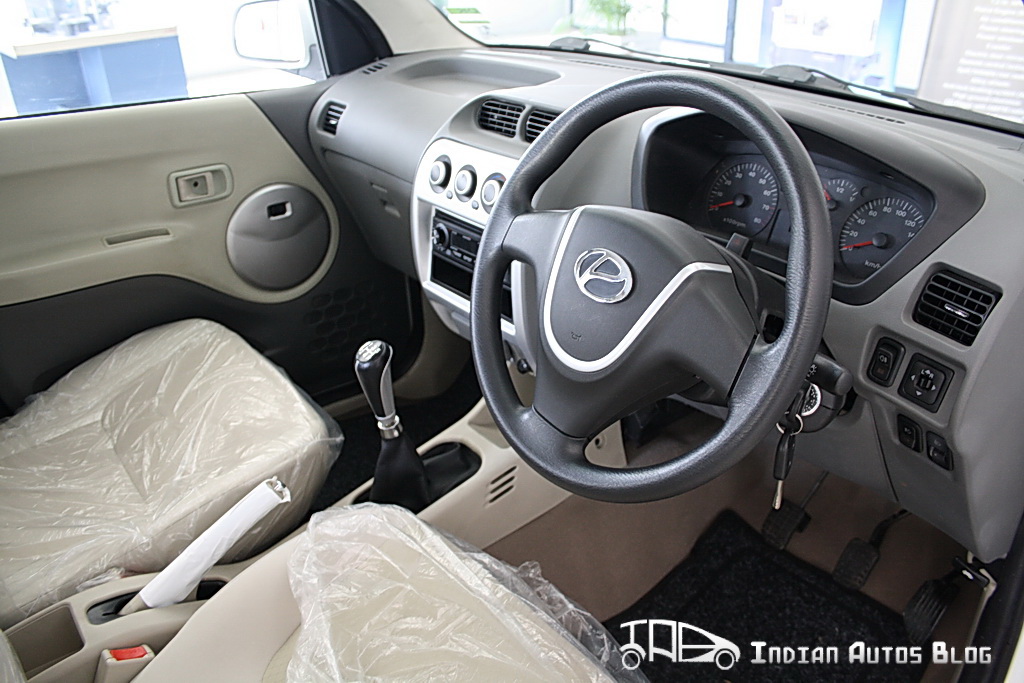 The Premier Rio+ now looks chic and stylish from the outside. But is it the same story on the inside? Is the build quality right for the Indian conditions? How good is the quality of plastics? Is it spacious enough to accommodate an average family with luggage?
The Premier Rio+ now looks chic and stylish from the outside. But is it the same story on the inside? Is the build quality right for the Indian conditions? How good is the quality of plastics? Is it spacious enough to accommodate an average family with luggage?
Let’s find out:
The number of changes made to the interior of the refreshed Premier Rio are certainly less than those made to the exterior. The 2 main changes are – beige interiors and a new steering wheel and that’s about it.
Stepping into the Rio+ can be a daunting task for women and the elderly because it sits quite high above the ground and has no side step to assist the ingress. Once you climb in, you notice that the Rio+ has very basic interiors. The beige upholstery does not completely match with the sea gray plastic of the dash but does give an airy feel to the cabin.
A pinch of chrome has been added to the steering wheel which make it look slightly upmarket than the older one. The normal positioning of indicator stalks and wiper stalks is very much appreciated. The steering wheel does not come mounted with audio controls but has extra cushioning for the palms at the 10-and-2 positions.
The outside mirrors are electrically adjustable but if you want to fold them, you have to roll down the windows. The Rio also gets a rear washer and a defogger but the switches that operate them feel like they were taken from Fred Flintstone’s car.
The Rio comes with an aftermarket stereo from Nippon which has USB and AUX compatibility. As the sound quality is not that great and I would advise you to convince the dealer to knock it off and save a few bucks and fit a better one from established brands such as Pioneer or Kenwood. The gear knob feels very thin to hold in your hands and does not offer adequate grip when changing gear.
The dial cluster looks outdated with its blue background light. For the first time in my life, I have seen a white flash light instead of the ambiance light, probably a segment first as well.
The Rio gets negative points because only the front windows are electrically adjustable that too from a switch which is mounted on the door and not on the armrest. Thus, using the switch does take time to get used to.
The Rio’s compact dimensions has taken a toll on the interior space. If a well built person sits next to the driver, it could give rise to many ‘awkward situations’. When you get in the back seat of the Rio, you notice that this is strictly a four seater vehicle. Although it is possible to make a small child sit in the rear seat between two adults, it would be a bit inhuman. The rear does not get its own cooling vents, just a small astray for your sutta needs.
The luggage space is quite ample at the very rear of the car and because the rear seats fold flat, it can be further increased. A small light in the luggage space makes loading and searching simple when it is pitch dark. As the spare wheel is on the tailgate, you get more storage area for your tools under the floor.
Time to answer the big question – Build quality. This is a tricky one. The build quality of the Rio is exactly the same quality that you see on the Mahindra Bolero. Everything is hard and tough and can take sustained abuse (even with a hammer) but nothing is aesthetically pleasing.
Do tune in tomorrow for the final leg of the review – Driving impressions!





























